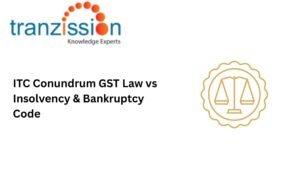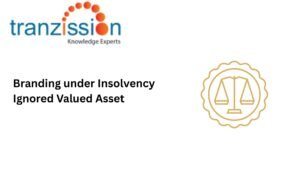
Relationship between insolvency law and credit ratings
Table of Contents
Insolvency laws aim to provide a framework for dealing with situations when an individual or company is unable to pay their debts as they become due. It ensures fair and equitable treatment of creditors and potentially allows for the recovery of assets. The framework helps to ensure that creditors can recover their dues, reducing the risk of default and improving the overall health of the financial system. Insolvency law and credit ratings are intertwined because strong insolvency laws improve financial stability, reduce credit risk, and encourage lending, ultimately influencing credit ratings.
Understanding the Relationship Between Insolvency & Credit Scores
What is a Credit Score & Why Does It Matter?
A credit score is a numerical representation of an individual’s or company’s creditworthiness. Banks, lenders, and financial institutions use it to assess loan eligibility. It summarizes the credit history and reflects the ability to manage debt responsibly. The credit score can be affected by several factors such as the corporate debtor’s (CD) payment history such as the on-time or delayed loan payments, the debt-to-income ratio or the level of outstanding loans, and defaults, bankruptcies, or insolvency records.
How Insolvency Impacts Credit Ratings
Insolvency, particularly bankruptcy or liquidation, significantly impacts credit ratings, making it harder for the CD to secure credit in the future and can appear on credit reports, acting as a warning to lenders. For instance, filing for insolvency is reported to credit bureaus, leading to a substantial drop in credit scores. Proceedings under Chapter 7 or Chapter 11 of the United States (US) Bankruptcy Code, or resolution or liquidation proceedings in the Insolvency and Bankruptcy Code, 2016 (IBC) affect credit scores, based on how debts are settled.
Suggested Reading : Role of e-auctions in liquidating assets
Corporate Insolvency & Its Effect on Business Creditworthiness
Insolvency Filings & Their Immediate Impact on Business Credit Scores:
Initiating the corporate insolvency resolution process (CIRP) under the IBC marks insolvent companies as high-risk borrowers. Lenders may view such companies with a history as high-risk applicants, potentially leading to higher interest rates or denial of credit applications. It also takes time to rebuild the credit score after entering the resolution process which makes it difficult to secure future funding
Non-Performing Loans (NPLs) & Banking Sector Impact:
High corporate insolvencies increase NPL ratios and put pressure on banking institutions. Higher NPLs can weaken the banking system and its ability to provide credit to the real economy. However, credit data analysis helps in predicting insolvency risks before a company reaches financial distress.
Post-Insolvency Credit Rebuilding Strategies for Businesses:
After insolvency, companies can rebuild credit through strategies like debt restructuring through negotiating with creditors via the pre-pack insolvency frameworks, which can help companies regain financial stability. Ensuring compliance with transparent financial disclosure and adopting effective turnaround strategies can improve future creditworthiness.
Personal Insolvency & Credit Score Recovery
How Bankruptcy Affects Personal Credit Ratings:
Insolvency stays on an individual’s credit report for 7-10 years and affects loan approvals. Post-insolvency, the credit limits are reduced and interest rates increase.
Ways to Rebuild Credit After Insolvency:
Although it will take time, insolvent companies can rebuild credit after insolvency. Ensuring timely repayment of restructured loans and looking into secured credit options, such as secured credit cards, fixed deposit-backed loans, and maintaining a low credit utilization ratio shows financial discipline.
Case Studies – Insolvency’s Impact on Credit & Financial Stability
The IBC has impacted corporate credit ratings by shifting from a debtor-in-control to a credit-in-control regime, leading to faster and potentially higher recoveries for lenders, and encouraging a more disciplined credit culture. Several large corporations saw a credit rating downgrade post-CIRP, limiting their access to fresh capital. BC-led resolutions have improved creditor confidence, leading to better recovery rates over time. In the US, Lehman’s Bankruptcy in 2008 triggered widespread panic, as it demonstrated that even major institutions could collapse. This eroded investors globally, froze credit markets and led to economic distress. In response to this, Governments implemented credit repair mechanisms (bailouts, loan restructuring programs) to stabilize financial markets.
The Future of Credit Risk Assessment in Insolvency Cases
The future of credit risk assessment in insolvency cases likely involves increased use of artificial intelligence (AI) and machine learning for faster, more accurate, and objective decision-making, along with the ability to analyze vast datasets and adapt to new information. In addition to this, by adapting to new regulations and compliance requirements, the insolvency framework will be able to introduce structured financial rehabilitation programs for companies and individuals.
Conclusion
Insolvency law and credit ratings are interconnected because an effective insolvency framework can improve credit discipline, enhance investor confidence, and facilitate faster, more efficient debt resolution. Having efficient insolvency and debt resolution frameworks can also improve financial inclusion by making it easier for businesses to access credit and for financial institutions to recover their investments. Efficient regulation of corporate insolvency is associated with increased access to credit for such companies or individuals, and on better terms.





